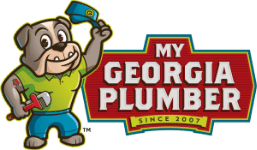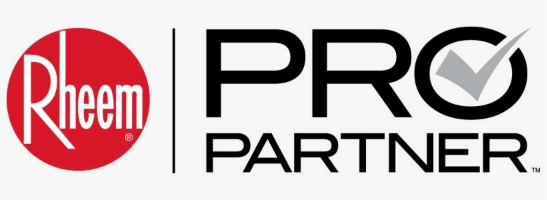
A continued summary of significant revisions of the International Plumbing Code to be published in the 2021 edition.
This is the continuation of a series of columns covering only the code changes that were approved as submitted from 2018 to the 2021 International Plumbing Code (IPC) change hearings. There were many code change proposals and two rounds of code hearings for the 2018 IPC. The following is a summary of the significant code changes that were approved during the International Code Council hearings in Columbus, Ohio, and Richmond, Va.
These code changes will appear in the 2021 edition of the International Plumbing Code, which will soon be published and available for jurisdictions to consider for adoption. Because it is possible for modifications to the proposed text to be made from the floor during the code hearing process and multiple code changes were made to the same code section, which will require ICC staff to develop the final text for a given code section incorporating all the changes, I recommend you refer to the 2021 IPC for the final version of any code changes reported on hereinafter.
Proposed additions are underlined and deletions are struck through. They are followed by the proponents’ published reason statements, along with any of my comments, as noted.
(subhead) Code Change: IPC Section 1002.1
Revise as follows:
1002.1 Fixture traps.
Each plumbing fixture shall be separately trapped by a liquid-seal trap, except as otherwise permitted by this code. The vertical distance from the fixture outlet to the trap weir shall not exceed 24 inches (610 mm), and the horizontal distance shall not exceed 30 inches (610 mm) measured from the centerline of the fixture outlet to the centerline of the inlet of the trap. The height of a clothes washer standpipe above a trap shall conform to Section 802.3.3. A fixture shall not be double trapped.
Exceptions:
1. This section shall not apply to fixtures with integral traps.
2. A combination plumbing fixture is permitted to be installed on one trap, provided that one compartment is not more than 6 inches (152 mm) deeper than the other compartment and the waste outlets are not more than 30 inches (762 mm) apart.
3. A grease interceptor intended to serve as a fixture trap in accordance with the manufacturer's installation instructions shall be permitted to serve as the trap for a single fixture or a combination sink of not more than three compartments where the vertical distance from the fixture outlet to the inlet of the interceptor does not exceed 30 inches (762 mm) and the developed length of the waste pipe from the most upstream fixture outlet to the inlet of the interceptor does not exceed 60 inches (1524 mm).
4. 3. Floor drains in multilevel parking structures that discharge to a building storm sewer shall not be required to be individually trapped. Where floor drains in multilevel parking structures are required to discharge to a combined building sewer system, the floor drains shall not be required to be individually trapped provided that they are connected to a main trap in accordance with Section 1103.1.
Proponent’s reason statement: This is an error in the code that has been present since the change was made to section 802.1.7 requiring that utensil/pot/pan sinks to be indirectly connected. Previously, a direct connection was also permissible, which promulgated exception No. 3. Since a direct connection is no longer permissible for these type of sinks, exception No. 3 would be in direct violation of 802.1.7
My comments: I have served on the grease interceptor standard committees with ASME since the 1990s and in all cases, grease interceptors have a vent that allows air to pass through the unit so as not to create a siphoning condition within the unit. For this reason, many years ago, all the codes stopped referring to grease interceptors as traps. They are grease interceptors that have integral vents between the chambers of the interceptor.
(subhead) Code Change: IPC Sections 1002.4.1.5, 1002.4.1
Add new text as follows:
1002.4.1.5 Fixture drain connection for trap priming.
A fixture drain from a lavatory or hand sink shall serve as a method of providing trap seal protection for an emergency floor drain, a trench drain, or a floor sink where such fixtures are located in the same room. A fixture drain from a drinking fountain shall serve as a method of providing trap seal protection for an emergency floor drain, a trench drain, or a floor sink where such fixtures are in the same room or in a room adjacent to the room having the drinking fountain. The fixture drain shall not be routed on or above the surface of the floor and shall connect to the floor drain, trench drain, or floor sink at a point that is below the flood level rim and above the inlet to the trap of the receiving fixture.
Revise as follows:
1002.4.1 Trap seal protection.
Trap seals of emergency floor drain traps and trap seals subject to evaporation shall be protected by one of the methods in Sections 1002.4.1.1 through 1002.4.1.4 1002.4.1.5.
Proponent’s reason statement: This is a method of providing trap seal protection that can lower the owner's overall cost of maintenance and requires no special or certified product to do so.
Currently, the 2018 International Plumbing Code allows for reclaimed or graywater-supplied trap primer devices that comply with ASSE 1018, as well as a wastewater-supplied device that complies with ASSE 1044. The proposed method simply removes the need for any "certified" product.
Experience has proven that the ASSE 1018 devices don't typically have a record of providing long service; maintenance issues have also been reported with the 1044 devices. When owners decide to go back to using gel-type soaps even though the manufacture specifically states the need for foaming soap, the 1044 devices have a tendency to plug up with the gel soaps over time, which requires maintenance intervention.
The maintenance for the 1018 device is even more problematic, often we would be replacing these devices within 6 to 12 months of installation. This proposed method is essentially already something that is allowed by the code. We have used this method since before I entered into the plumbing trade and have never had a complaint about it failing or creating an unsafe/serious condition for an occupancy.
The 2018 International Plumbing Code, published on Aug. 31, 2018, had the following language:
1002.4.1.2 Reclaimed or gray water-supplied trap seal primer valve.
A reclaimed or gray water-supplied trap seal primer valve shall supply water to the trap. Water-supplied trap seal primer valves shall conform to ASSE 1018. The quality of reclaimed or gray water supplied to trap seal primer valves shall be in accordance with the requirements of the manufacturer of the trap seal primer valve. The discharge pipe from the trap seal primer valve shall connect to the trap above the trap seal, on the inlet side of the trap.
1002.4.1.3 Waste water-supplied trap primer device.
A waste water-supplied trap primer device shall supply water to the trap. Waste water-supplied trap primer devices shall conform to ASSE 1044. The discharge pipe from the trap seal primer device shall connect to the trap above the trap seal on the inlet side of the trap.
(subhead) Code Change: IPC Section 1102.6, Chapter 15
Add new text to Chapter 15 as follows:
ASME/IAPMO Z1034-2015: Test Method for Evaluating Roof Drain Performance
Revise as follows:
1102.6 Roof Drains.
Roof drains shall conform to ASME A112.6.4 or ASME A112.3.1. Roof drains, other than siphonic roof drains, shall be tested and rated in accordance with ASME A112.6.4 or ASPE/IAPMO Z1034.
Proponent’s reason statement: ASPE/IAPMO Z1034 is the consensus standard for testing and rating roof drains for their flow rate at different ponding heights. The current code requires the manufacturer to publish its flow rates. The flow rates are determined by testing to either of the two standards referenced. Siphonic roof drains are rated differently with the system designed in accordance with ASPE 45; the roof drain is tested in accordance with ASME A112.6.9.
The testing requirements in the standard are consistent with the results published in the ASPE Research Foundation Roof Drainage Research Report. There are third-party laboratories currently testing and certifying roof drains to the ASPE/IAPMO Z1034 standard.
(subhead) Code Change: IPC Sections 1106.2, 1106.2.1
Proponent: Ronald George, Plumb-Tech Design & Consulting Services
Revise as follows:
1106.2 Size of storm drain piping.
Vertical and horizontal storm drain piping shall be sized based on the flow rate through the roof drain. The flow rate, as calculated in accordance with Section 1106.2.1, shall be checked against the roof drain manufacturer's published flow rate for the specific roof drain model and size to verify that the selected roof drain will handle the anticipated flow. The flow rate in storm drain piping shall not exceed that specified in Table 1106.2.
Add new text as follows:
1106.2.1 Rainfall rate conversion method.
The rainfall rate falling on a roof surface shall be converted to a gallons per minute flow rate in accordance with Equation 11-1.
GPM = R • A • 0.0104 (Equation 11-1)
Where:
R = Rainfall intensity in inches per hour
A = Roof area in square feet
Proponent’s reason statement: The flow rates for various pipe sizes in the roof drain sizing table were changed from square feet (SF) to gallons/minute (GPM). This code change simply adds a calculation from SF to GPM so that engineers, design professionals and contractors can verify if the roof conductor piping is sized correctly.
My additional comment: About 25 years ago, a big-box retailer experienced a roof collapse. During the course of the investigation, the engineer checked the roof conductor pipe sizes and the roof drain sizing and found them to be sized in accordance with the tables in the codes. In an effort to prevent a collapse at other stores, the big-box retailer hired a university hydraulics lab in the Midwest to set up a test showing the flow characteristics of the three drains listed in the plumbing specifications.
The lab did the research by building a test stand that was designed to replicate conditions on a typical roof. The results were published and the engineer gave me a copy of the research. Interestingly, as the storm water flows were increased to the design level, it showed a vortex form at the roof drain when the water got a few inches deep. The vortex slowed the water entering the drain until the water level reached the top of the strainer and started to pour over into the top of the drain.
In the tests, drain model A had water ponding 8 inches above the drain at design flow. Drain model B had water ponding 16 inches deep at design flow, and drain model C had water ponding 22 inches deep at full design flow — that is almost 2 feet of water. It is a significant structural load that would challenge most roof structures. One cubic foot of water weighs 62.4 pounds/cubic foot. If the water is 22 inches deep, it would be 114.4 pounds/square foot of live load on the roof.
During the flow tests in the lab, the piping and the drain installation was the same for all three brands of roof drains. The tests revealed that the design of the drain sump width, depth and the strainer design significantly affected the flow into the storm conductor piping. The reports showing the flows in one roof drain in particular allowed water to pond up to 22 inches deep; that was the same model roof drain that was installed on the project where the roof had collapsed.
This disparity between drain flows of three different manufacturers with the same roof drain outlet size showed that there needed to be performance requirements added to the ASME roof drain standards. ASME has a roof drain standard, but for years, it was simply a material and dimensional standard; there is no performance requirement.
The standards are now adding flow requirements and the manufacturers are switching from rating their drains on square feet in tables based on pipe outlet size to rating them for gpm. This had caused a disconnect between roof drain sizing tables in the codes, because the plumbing codes were still based on sizing in square feet and now the drains are rated by gpm. This new formula solves that problem.
(subhead) Code Change: IPC Sections Chapter 14, 1401.1, 1401.2, 1401.3, 1401.4, 1401.5, 1401.6, 1402.1, 1402.3, Table 1402.3, 1403.1
Revise as follows:
Chapter 14
SUBSURFACE LANDSCAPE IRRIGATION GRAYWATER SOIL ABSORPTION SYSTEMS
1401.1 Scope.
The provisions of this chapter shall govern the materials, design, construction and installation of subsurface landscape irrigation graywater soil absorption systems connected to nonpotable water from on-site water reuse systems.
1401.2 Materials.
Above-ground drain, waste and vent piping for subsurface landscape irrigation graywater soil absorption systems shall conform to one of the standards listed in Table 702.1. Subsurface landscape irrigation graywater soil absorption systems, underground building drainage and vent pipe shall conform to one of the standards listed in Table 702.2.
1401.3 Tests.
Drain, waste and vent piping for subsurface landscape irrigation graywater soil absorption systems shall be tested in accordance with Section 312.
1401.4 Inspections.
Subsurface landscape irrigation graywater soil absorption systems shall be inspected in accordance with Section 107.
1401.5 Disinfection.
Disinfection shall not be required for on-site nonpotable water reuse for subsurface landscape irrigation graywater soil absorption systems.
1401.6 Coloring.
On-site nonpotable water reuse for subsurface landscape irrigation graywater soil absorption systems shall not be required to be dyed.
1402.1 Sizing.
The system shall be sized in accordance with the sum of the output of all water sources connected to the subsurface irrigation graywater soil absorption system. Where graywater collection piping is connected to subsurface landscape irrigation systems, graywater output shall be calculated according to the gallons-per-day-per-occupant number based on the type of fixtures connected. The graywater discharge shall be calculated by the following equation:
C = A × B
(Equation 14-1)
Where:
A = Number of occupants:
Residential—Number of occupants shall be determined by the actual number of occupants, but not less than two occupants for one bedroom and one occupant for each additional bedroom.
Commercial—Number of occupants shall be determined by the International Building Code.
B = Estimated flow demands for each occupant:
Residential—25 gallons per day (94.6 lpd) per occupant for showers, bathtubs and lavatories and 15 gallons per day (56.7 lpd) per occupant for clothes washers or laundry trays.
Commercial—Based on type of fixture or water use records minus the discharge of fixtures other than those discharging gray water.
C = Estimated gray water discharge based on the total number of occupants.
1402.3 Subsurface landscape irrigation graywater soil absorption site location.
The surface grade of all soil absorption systems shall be located at a point lower than the surface grade of any water well or reservoir on the same or adjoining lot. Where this is not possible, the site shall be located so surface water drainage from the site is not directed toward a well or reservoir. The soil absorption system shall be located with a minimum horizontal distance between various elements as indicated in Table 1402.3. Private sewage disposal systems in compacted areas, such as parking lots and driveways, are prohibited. Surface water shall be diverted away from any soil absorption site on the same or neighboring lots.
TABLE 1402.3
LOCATION OF SUBSURFACE IRRIGATION GRAYWATER SOIL ABSORPTION SYSTEM
| ELEMENT | MINIMUM HORIZONTAL DISTANCE | |
| Storage tank (feet) | Absorption field (feet) | |
| Buildings | 5 | 2 |
| Lot line adjoining private property | 5 | 5 |
| Water wells | 50 | 100 |
| Streams and lakes | 50 | 50 |
| Seepage pits | 5 | 5 |
| Septic tanks | 0 | 5 |
| Water service | 5 | 5 |
| Public water main | 10 | 10 |
For SI: 1 foot = 304.8 mm.
1403.1 Installation.
Absorption systems shall be installed in accordance with Sections 1403.1.1 through 1403.1.5 to provide landscape irrigation without surfacing of water.
Proponent’s reason statement: The proposed changes better identify the content of the chapter from irrigation systems to soil absorption systems. The technical requirements can remain as written.
While graywater is a good source of water for maintaining plants, the provisions in this section do not adequately describe the technical aspects for use in an irrigation system. The technical requirements are addressing the soil's ability to absorb water and percolate into the soil. There are no requirements mentioned about considering the needs of plants, which is an essential part of an irrigation system.
When graywater is to be used for irrigation, then chapters that are in the International Green Construction Code, which include better technical requirements for irrigation systems, should be followed.
Code Change: 2021 International Private Sewage Disposal Code, Sections 504.2.1, 504.2.2, 504.2.3, 504.5, 504.2.1, Chapter 14
Add new standards as follows (standards not changed are not shown):
14
REFERENCED STANDARDS
C478-15a: Specification for Circular Precast Reinforced Concrete Manhole Sections
C1644-06: Specification for Resilient Connectors Between Reinforced Concrete On-Site Wastewater Tanks and Pipes
C478-15a: Specification for Circular Precast Reinforced Concrete Manhole Sections
C1644-06: Specification for Resilient Connectors Between Reinforced Concrete On-Site Wastewater Tanks and Pipes
Revise as follows:
504.2 504.2.1 Precast concrete and site-constructed tanks.
Precast concrete septic tanks and square or rectangular holding tanks shall conform to ASTM C913 C1227. The floor and sidewalls of a site-constructed concrete tank shall be monolithic, except a construction joint is permitted in the lower 12 inches (305 mm) of the sidewalls of the tank. The construction joint shall have a keyway in the lower section of the joint. The width of the keyway shall be approximately 30 percent of the thickness of the sidewall with a depth equal to the width. A continuous water stop or baffle not less than 56 inches (1422 mm) wide shall be set vertically in the joint, embedded one-half its width in the concrete below the joint with the remaining width in the concrete above the joint. The water stop or baffle shall be copper, neoprene, rubber or polyvinyl chloride designed for this specific purpose. Joints between the concrete septic tank and the tank cover and between the septic tank cover and manhole riser shall be tongue and groove or shiplap-type and sealed water tight using cement, mortar or bituminous compound. Connections between concrete septic tanks and holding tanks shall conform to ASTM C1644
Add new text as follows:
504.2.2 Precast Circular Concrete.
Pre-cast circular concrete; manhole riser sections, collars circular dosing or pump chambers, and holding tanks shall conform to ASTM C478
504.2.3 Pre-cast square or rectangular concrete.
Precast square or rectangular concrete; riser sections, collars, dosing or pump chambers shall conform to ASTM C913
Revise as follows:
504.5 Manholes.
Manhole collars and extensions shall be of the same material as the tank. Manhole covers shall be of concrete, steel, cast iron or other approved material.an approved material that maintains a watertight seal.
504.2.1 Manhole Covers.
Manhole covers shall be of an approved material that maintains a watertight seal. When required by the jurisdiction having authority each manhole cover shall have an effective locking device.
Proponent’s reason statement: Section 504.2 — Because it is suggested to reference the specific components based on their shape, function and individual ASTM reference, it was felt that separate sections for each precast concrete shape helped clarify the code references and applications.
Section 504.2.1 — The current edition specifies the ASTM C913 Specification for Precast Concrete Water and Wastewater Structures standard, which may be appropriate for many precast structures utilized for water and wastewater applications, including other precast items within this code.
However, the suggested ASTM C1227 Specification for Precast Concrete Septic Tanksprovides the specific requirements for septic tank materials, fabrication and quality testing. Additionally, the provisions within C1227 are appropriate for the sewage holding tank applications described within Section 805.
To provide best uniform assurance of water tightness, a resilient connector between tank and pipe is required. The standard for this product is ASTM C1644 Specification for Resilient Connectors Between Reinforced Concrete On-Site Wastewater Tanks and Pipes.
Section 504.2.2 — Included within this code are precast concrete components that are circular-shaped. Those components are referenced as risers for tanks or holding structures. Consequently, the appropriate ASTM standard for describing these components are best defined and included within ASTM C478 Specification for Circular Precast Reinforced Concrete Manhole Sections.
Section 504.2.3 — Additionally, there are available precast risers, collars, dosing or pump chambers which are not circular nor a septic tank. These components are best described and fall under the umbrella of ASTM c913 Specification for Precast Concrete Water and Wastewater Structures.
Section 504.5 — The existing language requires the use of the same materials for the extension sections (collars, risers, etc.) upon the flattop lid. Current septic tank fabrication methods have successfully fabricated hybrid systems which utilize precast concrete for the tank chamber for the attributes it possesses and other materials that are directly cast into the flattop lid as the riser section. Such materials could be cast-iron frames or virgin resin PVC components.
Section 504.5.1 — This new provision clarifies the cover is also to be watertight like the balance of the system and not the weak link. Additional language is added as a response to an identified safety issue regarding unauthorized access to septic systems, primarily by children, leading to dangerous or life-threatening situations.
The proposed language as similarly described within section 805.6 provides guidance and authority for local agencies to require locking apparatus on septic tank access covers if deemed appropriate for their jurisdiction.
Code Change: IPSDC Section 802.4
Revise as follows:
802.4 Manholes.
Each compartment of a tank shall be provided with not fewer than one manhole opening located over the inlet or outlet opening, and such opening shall be not less than 24 inches (610 mm) square or 24 inches (610 mm) in diameter. Where the inlet compartment of a septic tank exceeds 12 feet (3658 mm) in length, an additional manhole shall be provided over the baffle wall. Manholes shall terminate not greater than 6 inches (152 mm) below the ground surface. Manholes shall be of the same material as the tank. Steel tanks shall have not less than a 2-inch (51 mm) collar for the manhole extensions permanently welded to the tank. The manhole extension on fiberglass tanks shall be of the same material as the tank and an integral part of the tank. The collar shall be not less than 2 inches (51 mm) high.
Proponent’s reason statement: Same as Section 504.5, the existing language requires the use of same materials for the extension sections upon the flattop lid. Current septic tank fabrication methods have successfully fabricated hybrid systems which utilize precast concrete for the tank chamber for the attributes it possesses and other materials that are directly cast into the flat top lid for the riser section, such as cast-iron frames and covers.
This is the end of the code changes to the International Plumbing Code and the International Private Sewage Disposal Code.







